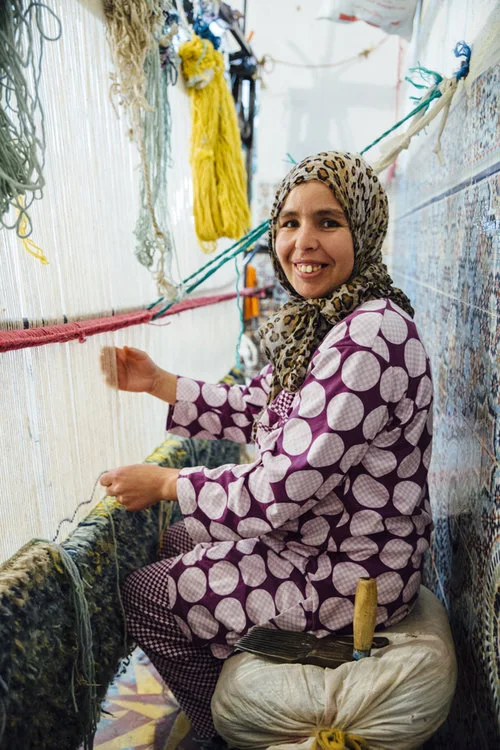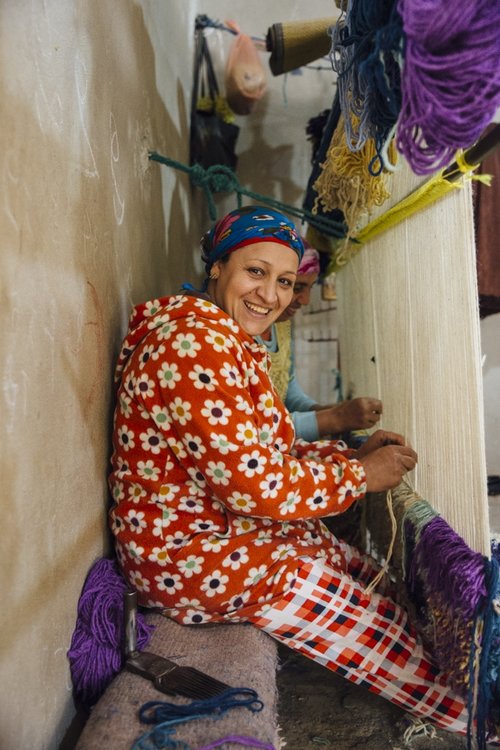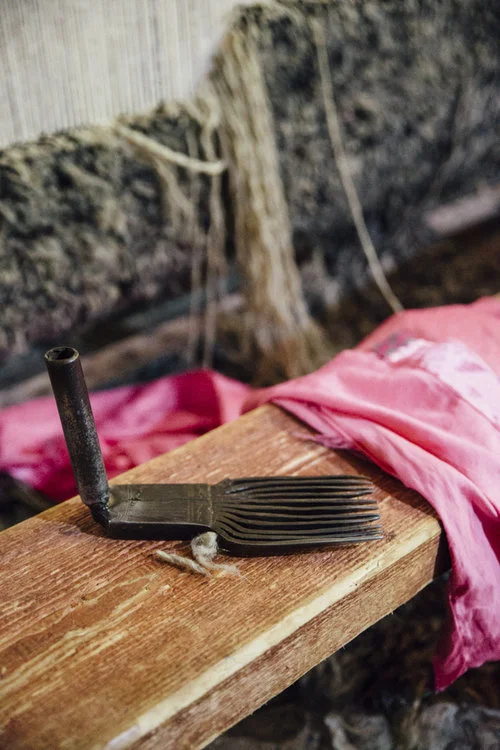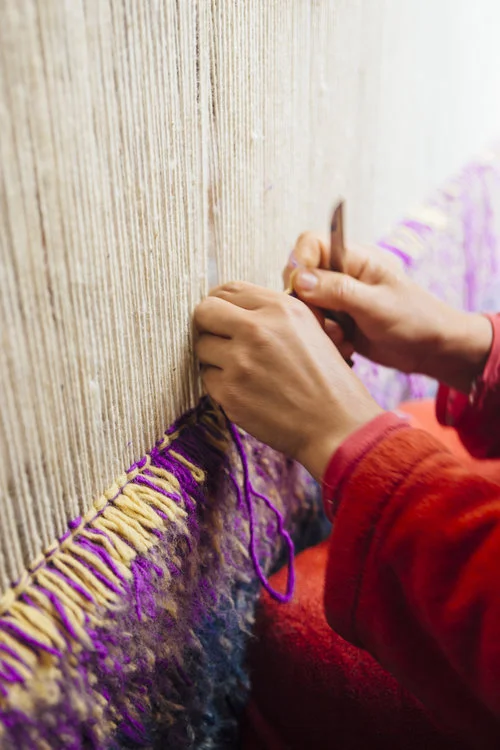Women of the Loom
In the rural ares of Morocco, weaving involves the social gathering of women. Berber women sing and chant about times of prosperity and romance and tell tales of superstition and magic as work. Berber women are the main weavers of decorative textiles and are assisted by their daughters or young girls learning the craft.
For these women weaving is an age-old tradition, passed down from generation to generation. A Berber girl traditionally learned the art of weaving from female relatives. It is a skill that commands great respect and prestige. All phases of yarn production - washing, spinning, and dyeing - are done by women in nearly all the various Berber tribes of Morocco. We traveled to the source of Les Nomades de Marrakech's contemporary rugs, otherwise known as Mrirt rugs and met the beautiful, talented Berber women that specialize in art of weaving.
The women kneel or sit as they work at looms, taller than they are, that look like bunk bed frames. They weave by hand, working in cooperatives of about 15 to 40, and sometimes one picks up where another leaves off. It usually takes weeks to make a carpet, but for the most involved rugs, it can take months.
Weaving in Morocco is a living thing – it is an ancient art form that is rooted in tradition and tribal boundaries, but not confined by the past. Incredibly, it manages to transcend time, adapting to the modern age and creating new patterns of expression that are now recognized worldwide as part of the Moroccan lexicon of weaving.
The weaving loom used to create weaving remains the ultimate symbol of magical protection. It is looked upon as a living things and treated as such. The loom is thought to possess 'barakah.' Barakah is an Arabic term meaning blessing. It's is the attachment of divine goodness to a thing, so if it occurs in something little, it increases it.
During the process of yarn production there is a constant awareness of the spirit world on the part of the weaver. Wool is considered lucky but the weaver must always be on her guard that evil does not enter between the threads during weaving. Mushts, the weaver's hammer combs, have handles carved with designs meant to avert evil. Symbols of these tools are also woven into many Moroccan tribal carpets.
Before beginning to weave, the women will say a quick prayer, 'Bismillah!' (In the name of Allah) to ensure good fortune and presumedly to protect the progress of the rug while it is still in its fragile development period. If the weaver takes all the necessary precautions in remembering the number and combination of threads to produce a design, the finished textile will not only give aesthetic pleasure, but contain power, or barakah. It will act as a 'power shield' against the evil eye and the djoun. The overall design of these textiles can be looked upon as a woven 'net' affording protection against evil forces. Berbers believe that their finished weavings evoke a power capable of protecting not only the weaver and her family, but the textile itself.
A mushats or taska is a small iron comb used after every new row is added to a carpet to pound the weft threads into place. It helps to compress the weave and keep everything in alignment.
A weaver knotting a pile knot, or zerbiya. She threads the weft back and forth through the warp continuously until the rug is complete. The weft is separated with rows of knots tied around the warp.
Although the majority of rural women in Morocco are illiterate, weaving has survived without textbooks or trade schools for generations. Older women weavers who train the younger, unwed girls have always passed down the skills orally. This transference of knowledge where the young apprentices learn the skills and take the reins is critical for the strength and survival of weaving as a cultural patrimony in Morocco.









